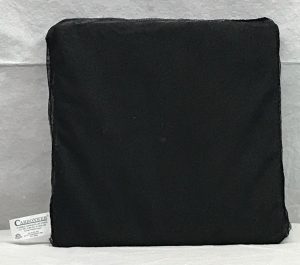Using Carbon For Gaseous Pollutants
Removing odors and gaseous pollutants from any environment is much difficult than removing airborne particulate. There are a number of air filter types that can easily remove airborne dust, but the removal of airborne odors and gases requires some very specific materials that can effectively adsorb these organic or inorganic molecules.
The most common material used to remove odors is activated carbon ( charcoal) which comes in a number of sizes. The most common is cocoanut shell carbon that is usually around 1/4″ in size and is often enclosed in a mesh type material or sometimes in a fine opening screen container. Carbon can be used in both air and water for the extraction of gaseous pollutants, making it one of the more popular materials on the market.
When cocoanut shells are placed in a high temperature oven under pressure it expands the surface area of the material and then makes it into a carbon material. The expansion to the shell gives the material a very high surface area and the ability to adsorb up to 100 times its own weight in gaseous pollutants. This means that a small amount of carbon material can remove a large amount of the odors and last a long period of time.
Pure Air Systems has been manufacturing HEPA and Carbon based, fan powered, commercial grade air filter systems since 1985. The various systems available from PAS include carbon media as a standard part of the filtration unit along with a prefilter an HEPA filter. In cases where a customer only has an odor or gaseous pollutant issue, Pure Air Systems can remove the HEPA filter and replace it with an all carbon bed of material. Depending upon the odor challenge, the systems can hold from as little as 8 lbs of carbon up to 60 lbs of carbon material. And the air flow capacity of the systems range from 50 CFM to 2000 CFM.
For more information on the complete line of HEPA and Carbon air filter systems please go to our website at: http://www.pureairsystems.com or call us on our toll-free number at: 8-869-8025.


